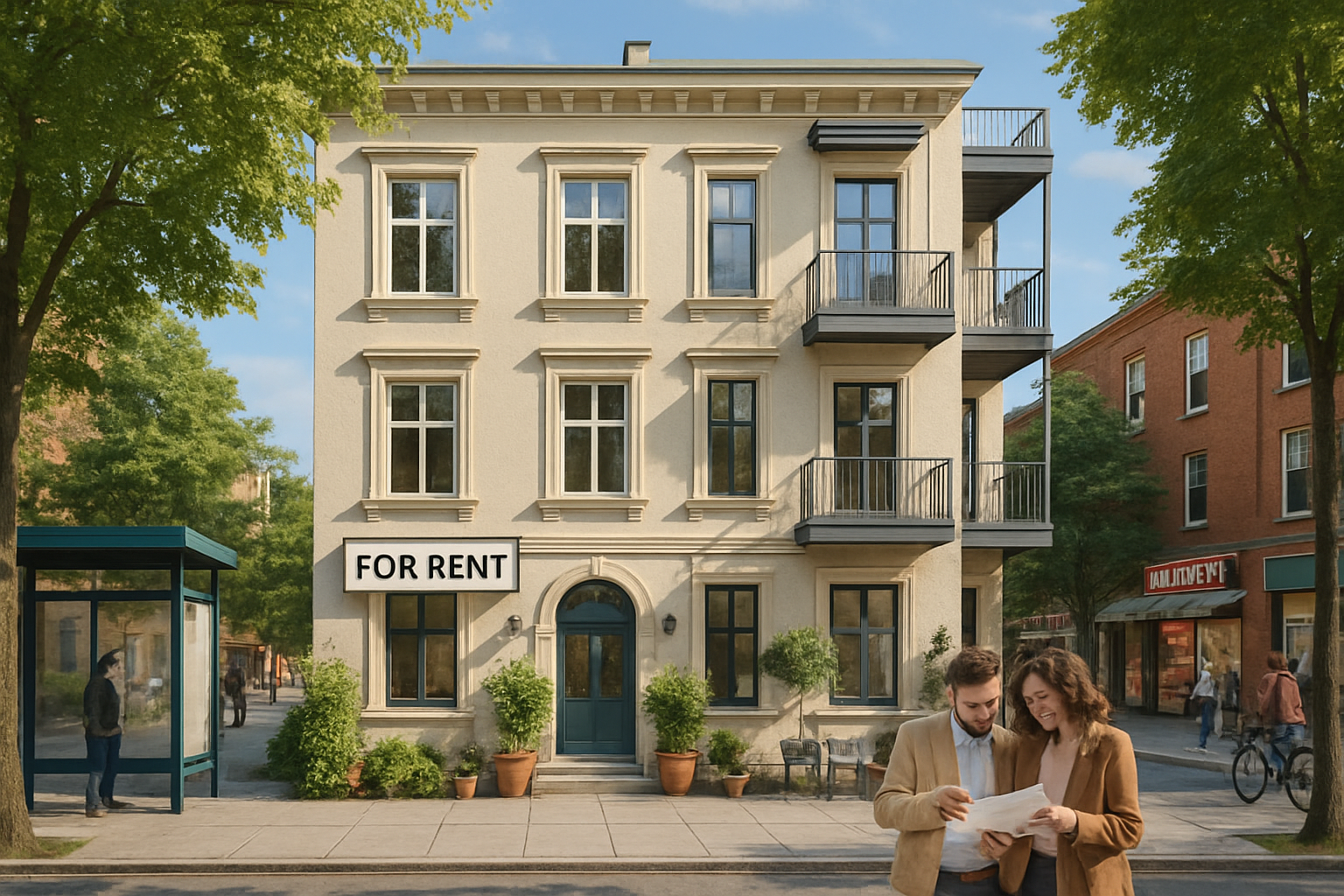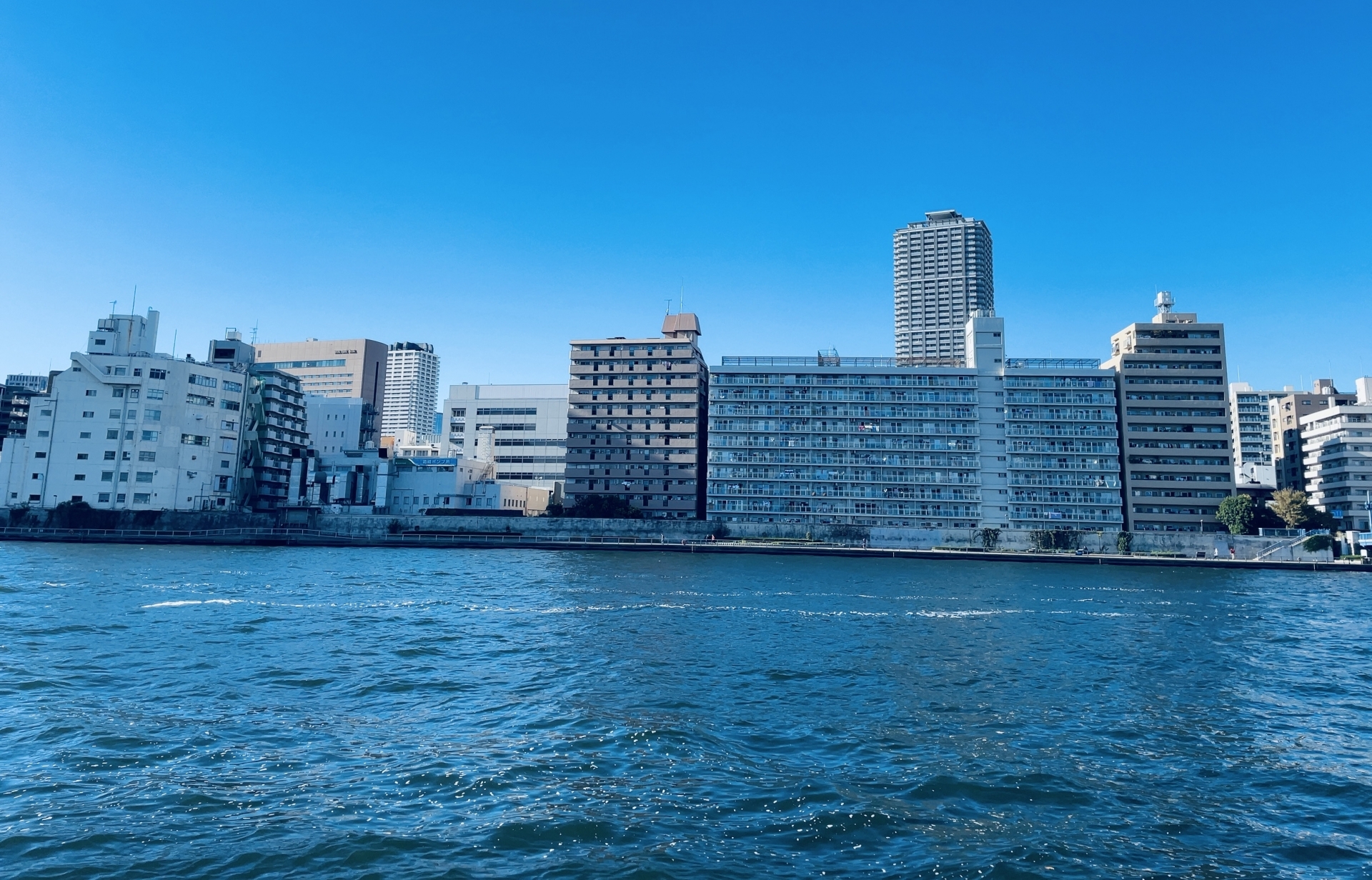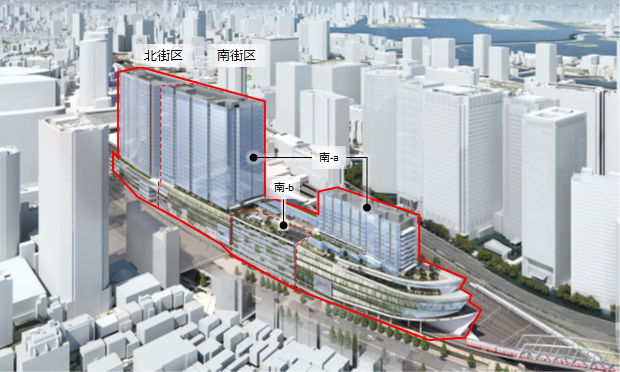In 2025, Japan's inflation rate hit 3.3%, the highest among the G7 countries. As prices continue to rise, many investors are looking for ways to preserve their assets. In particular, high-net-worth individuals are increasingly interested in investing in real estate as ahedge against inflation.
Why is real estate an excellent inflation hedge? In this article, INA & Associates, Inc. explains from a professional perspective why real estate is resistant to inflation and proposes an effective asset protection strategy.
We will systematically convey the knowledge necessary for asset protection, including the characteristics of real estate as a physical asset, the inflation-linked nature of rental income, and specific investment strategies practiced by wealthy individuals.
The Importance of Asset Management in the Age of Inflation
Reality shown by Japan's inflation rate
From 2024 to 2025, the Japanese economy is clearly showing signs of emerging from a prolonged period of deflation. According to the latest data released by the Ministry of Internal Affairs and Communications, the consumer price index rose 3.3% y/y in June 2025, which is the lowest since last November, yet still remains high.
Of particular note is the fact that Japan's inflation rate has reached the highest level among the G7 countries. Service prices and goods prices have increased by 1.3% and 5.6%, respectively, over the previous year, and are strongly characterized by imported inflation. This situation defies the conventional wisdom of the Japanese economy and has created an urgent need for investors to develop new asset management strategies.
Impact of Inflation on Assets
Price increases diminish the real value of cash and deposits. For example, if inflation continues at 3% per year, one million yen today will effectively be worth only 970,000 yen one year from now. This phenomenon is called "inflation risk," and it is a serious problem especially for investors with an asset composition that has a high cash ratio.
On the other hand, the value of physical assets tends to increase as prices rise. Real assets such as real estate, gold, and stocks have the potential to retain and possibly increase in value in an inflationary environment. This characteristic is the fundamental reason why real estate investments are attracting attention as a hedge against inflation.
Why Real Estate Investment is a Good Hedge Against Inflation
The reason why real estate investment is an excellent inflation hedge is due to its multifaceted characteristics. First, real estate is a physical asset with physical existence in the form of land and buildings, and is relatively stable against fluctuations in paper values. Second, rental income tends to rise with inflation because it adjusts according to the supply-demand balance in the market.
Furthermore, real estate investments often utilize financing from financial institutions. In an inflationary environment, the leverage effect is more pronounced because the real burden of borrowing is reduced. Due to these combined effects, real estate investment is highly valued, especially among the wealthy, as an investment instrument that provides both asset preservation andasset building.
| Inflation Protection Measures | Effects | Risk | Liquidity |
|---|---|---|---|
| Cash and deposits | ×x | Low | High |
| Real estate investment | ◎Better | Medium | Low |
| Stock Investment | ○ ○ High | High | High |
| Gold Investment | ○ ○ ○ ○ ○ ○ ○ ○ ○ ○ ○ ○ ○ ○ ○ ○ ○ ○ ○ ○ ○ ○ ○ | Medium | Medium |
Three decisive reasons why real estate is inflation-proof
Reason 1: Intrinsic value preservation as a physical asset
The greatest strength of real estate lies in its nature as a physical asset - land and buildings. Unlike financial assets such as cash and bonds, real estate maintains relatively stable value against fluctuations in currency values because of its physical existence.
According to the Real Estate Price Index published by the Ministry of Land, Infrastructure, Transport and Tourism, condominium prices have risen 42.8% over the past 30 years, from an average price of 32.04 million yen in 1994 to 45.75 million yen in 2023, demonstrating the long-term preservation of asset value. This increase reflects the scarcity of land and the increased replacement cost of buildings, clearly demonstrating the value preservation function in an inflationary environment.
Especially in prime urban locations, population concentration and development restrictions have further increased land scarcity. In the commercial and residential areas of central Tokyo, supply constraints are exerting continuous upward pressure on prices, and it is not uncommon to record price increases that exceed the rate of inflation.
Reason 2: Inflation-linked rental income
Rental income, which supports the profitability of real estate investments, has the characteristic of rising with inflation. This is due to the supply-demand balance in the rental market and the fact that the tenant's ability to pay increases with inflation.
In determining rents, the "rental case comparison method" is generally used, which is based on the rent levels of similar properties in the same area. In an inflationary environment, rents on new contracts rise in stages, and this is reflected in the renewal of existing contracts. However, it is also true that the actual increase in rents tends to be underestimated to a certain degree, since it is mainly based on ongoing contracts.
However, for properties in excellent locations and with stable demand, upward pressure on rents is certain. In particular, the inflationary linkage is more pronounced for properties that meet the following conditions
- Conveniently located: within a 10-minute walk from a major station
- Convenience of living: proximity to commercial, medical, and educational facilities
- Shallow age: property less than 15 years old
- Appropriate floor plan design: Floor plan that meets market needs
Reason 3: Effect of substantially reducing the burden of borrowing
When real estate investments utilize financing from financial institutions, inflation has the effect of reducing the real burden of borrowing. This is one of the key components of an "inflation hedge.
For example, in an environment of 3% annual inflation, a mortgage with a fixed rate of 2% will have a real interest rate of -1%. In other words, the real burden of borrowing is reduced year after year, creating an advantage for the investor.
This effect is especially noticeable for investors who are borrowing at long-term fixed interest rates. In the Japanese mortgage market, borrowers can borrow at fixed interest rates for 35 years and benefit from inflation over the long term.
| Borrowing Terms | Nominal interest rate | Inflation rate | Real interest rate | Effect |
|---|---|---|---|---|
| Fixed interest rate 2 | 2.0 | 3.0 | -1.0 | Advantageous |
| Fixed interest rate 1.5 | 1.5% Fixed interest rate | 3.0% -1.5 | -1.5 | Very favorable |
| Variable interest rate 3 | 3.0% -1.5 | 3.0% -1.5 | 0.0% Neutral | Neutral |
However, this effect may be limited for borrowers with variable interest rates, as interest rates may rise along with inflation. Therefore, when investing in real estate as a measure against inflation, the choice of interest rate type is also an important strategic factor.
Inflation-Proof Investment Strategies Practiced by High Net Worth Individuals
Positioning of Real Estate Investment among High Net Worth Individuals with Assets of 100 Million Yen or More
Real estate investment plays a central role in the asset management of high-net-worth individuals. The top reasons for this are "stable profitability," "resistance to inflation," and "inheritance tax planning.
The investment strategy that INA&Associates, Inc. offers to ultra-high-net-worth clients emphasizes the following principles
Diversification Principle: Real estate investments are positioned at 30-50% of total assets and balanced with equity, fixed income, and alternative investments. In this way, we seek to achieve stable returns by mutually complementing the risks of each asset class.
Principle of Location Focus: By concentrating investments in prime urban locations, the Fund will ensure both demand stability and price appreciation potential. In particular, we focus on properties in the five central wards of Tokyo (Chiyoda, Chuo, Minato, Shinjuku, and Shibuya wards) and central Osaka.
Principle of Emphasizing Cash Flow: We emphasize stable cash flow from continuous rental income, rather than simple price appreciation. In this way, we will build an earnings structure that is less susceptible to market fluctuations.
Specific Property Selection Criteria
Property selection is an extremely important factor in real estate investment for high-net-worth individuals. We will select properties with high inflation resistance based on the following criteria
Evaluation of location conditions
- Within 7 minutes' walk from a major train station
- Access to multiple train lines
- Proximity to commercial and medical facilities
- Availability of future redevelopment plans
Evaluation of building quality
- Within 15 years of building age (for RC construction)
- Appropriate maintenance and management system
- Seismic performance
- Market suitability of facility specifications
Profitability evaluation
- Surface yield of 4% or more (in central Tokyo)
- Vacancy rate of 5% or less
- Low risk of rent decline
- Potential for future rent increases
Use of leverage strategy
In real estate investment by wealthy individuals, it is important to utilize an appropriate leverage strategy. Effective use of loans from financial institutions will increase the efficiency of your own capital and maximize the effect of inflation protection.
Optimal borrowing ratio: It is common practice to finance 70-80% of the property value with loans and the remainder with personal funds. This ensures appropriate risk control while improving return on equity (ROE).
Choice of interest rate type: In an inflationary environment, borrowing at long-term fixed interest rates is advantageous. Taking advantage of the current low interest rate environment, we will aggressively consider borrowing at a 35-year fixed rate.
Repayment strategy: The basic policy is to make equal repayments of principal and interest, and to take full advantage of the real repayment burden reduction effect due to inflation. Early repayment will be carefully considered and judged in comparison with other investment opportunities.
| Investment Scale | Ratio of cash on hand | Borrowing Ratio | Expected ROE | Risk Level |
|---|---|---|---|---|
| 50 million yen | 30 | 70% 70% (in millions of yen) | 8-12% (8-12%) | Medium |
| 100 million yen | 25% 75 | 75% (%) | 10-15% 10-15 | Medium-High |
| 300 million yen | 20% 20% 80 | 80% 80 | 12-18% 12-18 | High |
Portfolio Construction Practices
To achieve effective asset defense, it is essential to build a portfolio with multiple properties rather than investing in a single property.
Regional diversification: Diversify regional risk by investing primarily in central Tokyo, but also in major cities such as Osaka, Nagoya, and Fukuoka.
Diversification of property types: Increase resistance to market fluctuations by combining different property types, such as studio apartments, family type apartments, and small office buildings.
Diversification of acquisition timing: Instead of acquiring a large number of properties at once, we aim to equalize acquisition prices by acquiring properties in stages, taking into account market cycles.
Through this comprehensive approach, HNWIs achieve effective inflation protection and long-term asset preservation through real estate investment.
Risks and Cautions in Real Estate Investment
Limitations as a hedge against inflation
While real estate investment is an excellent inflation hedge, it is important to understand that it is not a panacea. In particular, the following points require careful consideration
Liquidity constraints: Real estate is less liquid than stocks and bonds and may have difficulty responding to sudden market changes. Selling typically takes 3-6 months, and may take longer depending on market conditions.
Dependence on local economy: The value of real estate is highly dependent on the economic conditions of the region in which it is located. There is a risk of long-term declines in real estate values in a particular area due to population decline or changes in the industrial structure.
Rising maintenance costs: In an inflationary environment, building maintenance costs will also rise. Costs for repairs, maintenance, property taxes, and other expenses may put pressure on earnings.
Understanding Market Risk
Rising Interest Rate Risk: If interest rates rise along with inflation, the relative attractiveness of real estate for investment yields may decrease. In addition, if borrowings are made at floating interest rates, the repayment burden will increase.
Vacancy Risk: There is a risk that changes in economic conditions may cause rental demand to decline and vacancy rates to rise. This risk is particularly pronounced for properties with inferior location and building quality.
Regulatory Change Risk: Changes in laws and regulations, such as tax code revisions and changes in building codes, may affect the profitability of real estate investments.
Key Points for Success
Appropriate property selection: It is important to comprehensively evaluate properties from the three perspectives of location, building quality, and profitability, and to select properties that are competitive over the long term.
Prudent financial planning: Avoid excessive leverage and develop a financial plan with sufficient margin against rising interest rates and the occurrence of vacancies.
Cooperation with professionals: Real estate investment requires specialized knowledge. We collaborate with trusted real estate companies, tax accountants, and financial planners to make appropriate investment decisions.
Ongoing market analysis: The real estate market is constantly changing. It is important to review your investment strategy through regular market analysis.
| Risk Factors | Degree of Impact | Importance of countermeasures | Main countermeasures |
|---|---|---|---|
| Rising interest rates | High | High | Select fixed interest rate, secure surplus funds |
| Vacancies | Medium | High | Focus on location, set appropriate rent |
| Aging building | Medium | Medium | Periodic maintenance, repair reserve |
| Regulatory change | Low | Medium | Information gathering, professional consultation |
Conclusion
In the current economic environment with an inflation rate of 3.3%, real estate investment is one of the most effective measures against inflation. Three characteristics of real estate - its value preservation function as a physical asset, the inflation-linked nature of rental income, and the effect of substantially reducing the burden of borrowing - make real estate both an asset defender and anasset builder.
Particularly among high net worth individuals, long-term asset preservation is achieved through appropriate location selection, the use of leverage strategies, and portfolio diversification. However, it is important to fully understand liquidity constraints and market risks, and to make prudent investment decisions in collaboration with professionals.
As a next action, we recommend that you first consult with a trusted real estate investment professional to determine the best strategy for your asset situation and investment goals. INA & Associates, Inc.
Frequently Asked Questions
Q1. What is the minimum amount of money required to start real estate investment?
A1: For a studio condominium investment in central Tokyo, it is possible to start with a property value of approximately 30 million yen. The standard amount of personal funds is 20-30% of the property price (6-9 million yen), plus other expenses. However, it is important to ensure that you have sufficient funds to spare.
Q2: Will the benefits of real estate investment be lost if the inflation rate declines?
A2. Even if the inflation rate declines, the basic advantages of real estate investment will be maintained. Benefits such as stable rental income, long-term preservation of asset value, and inheritance tax protection can be enjoyed regardless of the inflation rate.
Q3. Are there any inflation-protection effects even for real estate in rural areas?
A3. Compared to urban areas, real estate in rural areas has limited inflation-protection effects. This is because it is difficult to expect rents and asset values to increase due to population decline and shrinking economic activity. We recommend that you choose properties in prime locations in urban areas as a measure against inflation.
Q4. Which is better as a measure against inflation, real estate investment or stock investment?
A4. Each has different characteristics. Real estate investments offer stability and predictability, while stock investments offer liquidity and growth. Ideally, a diversified investment combining both should maximize the effect of inflation protection while controlling risk.
Q5. Are there any tax considerations for real estate investments?
A5. There are various tax considerations for real estate investment. While there are advantages such as the recognition of depreciation, the use of profit and loss adjustments, and the effect of reducing the assessed value for inheritance tax purposes, there are also costs such as transfer income tax and fixed asset tax. We recommend consulting a tax accountant or other professional.

Daisuke Inazawa
Representative Director of INA&Associates Inc. Based in Osaka, Tokyo, and Kanagawa, he is engaged in real estate sales, leasing, and management. He provides services based on his extensive experience in the real estate industry. Based on the philosophy that “human resources are a company's most important asset,” he places great importance on human resource development. He continues to take on the challenge of creating sustainable corporate value.

.png)













